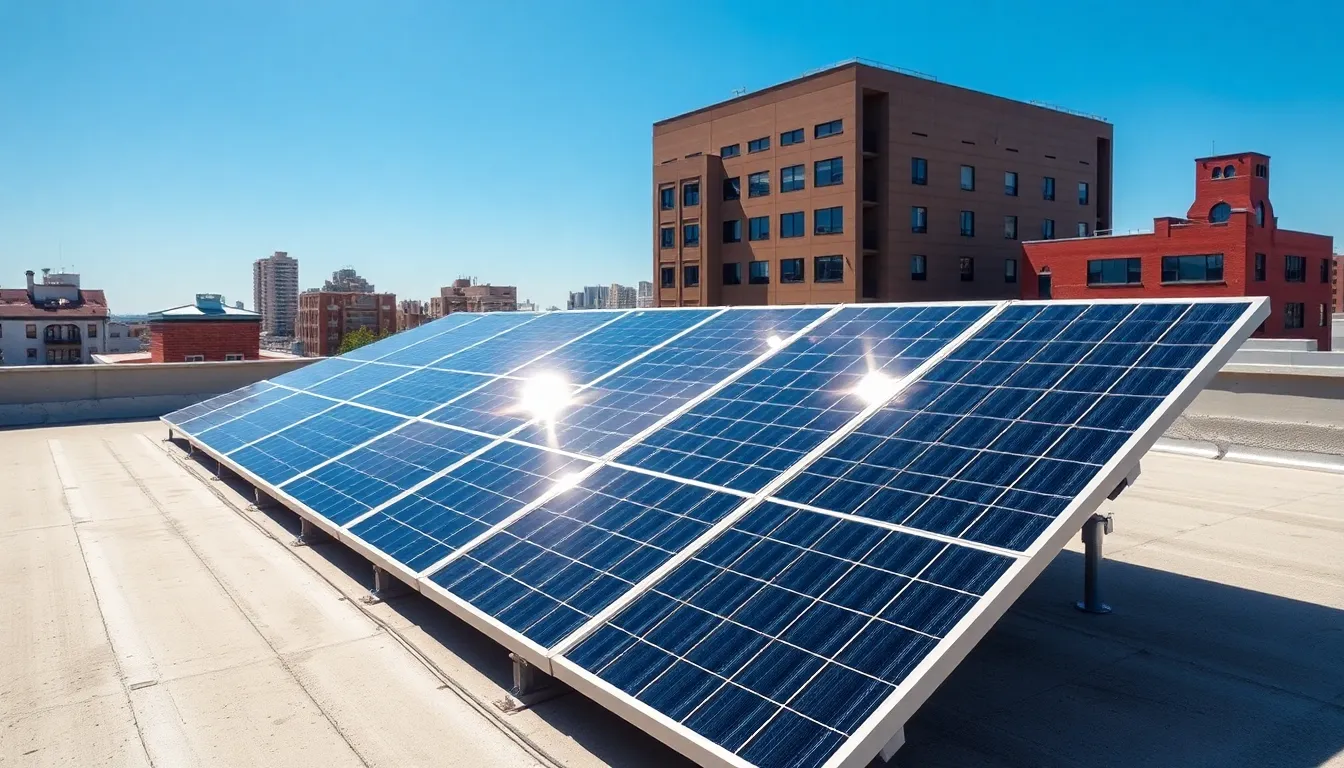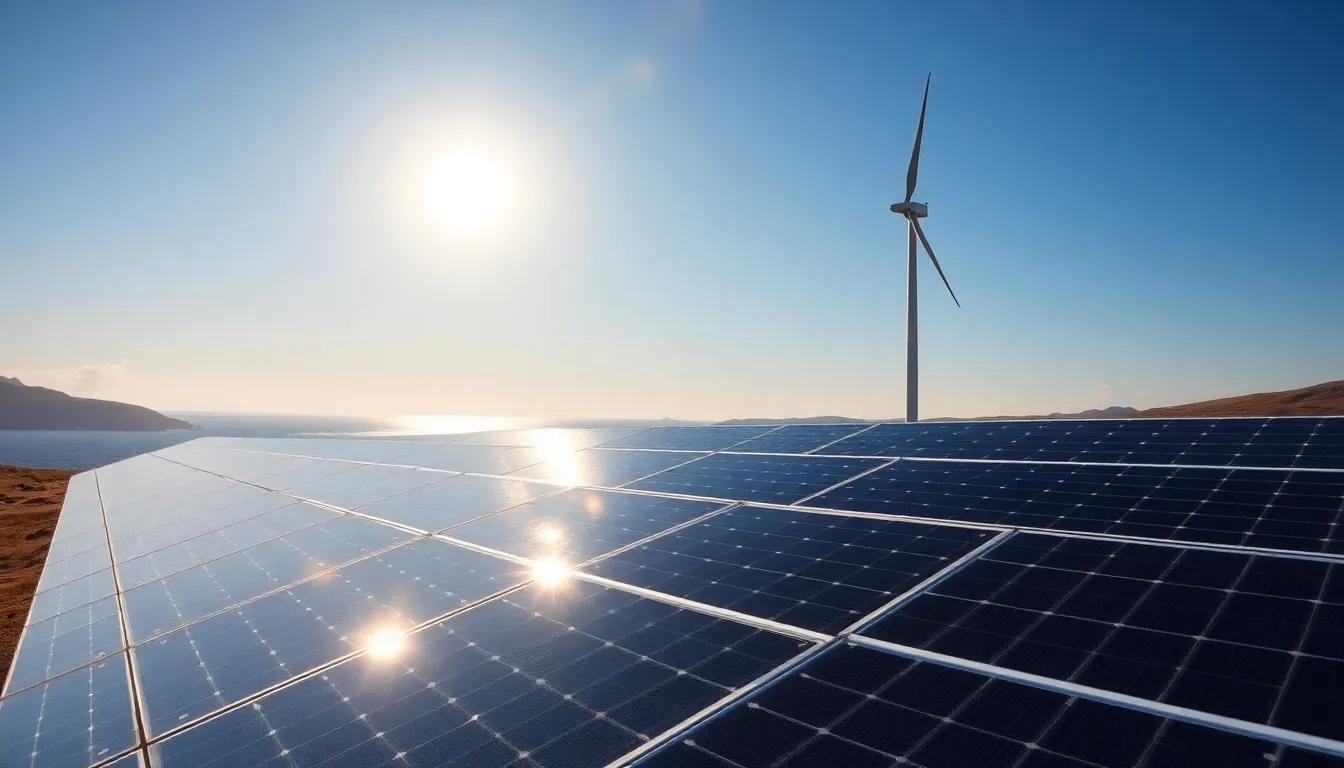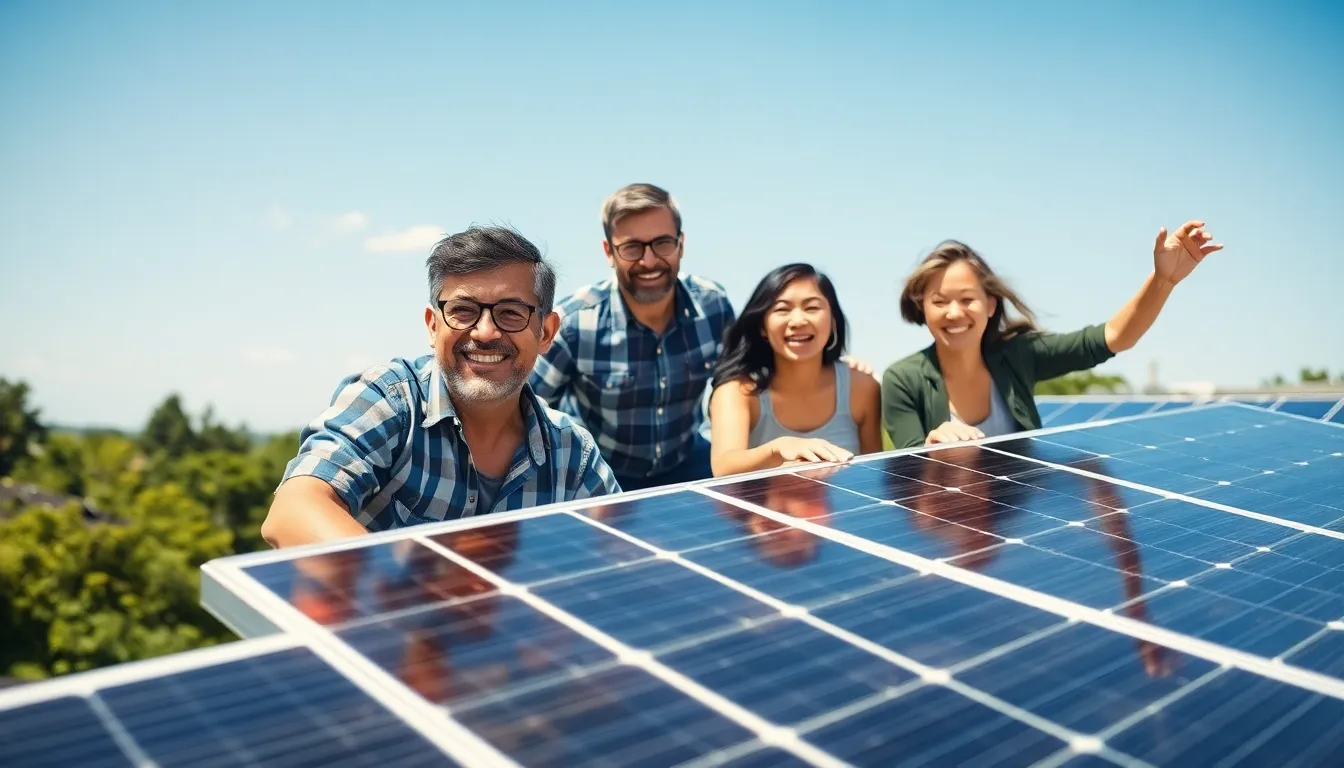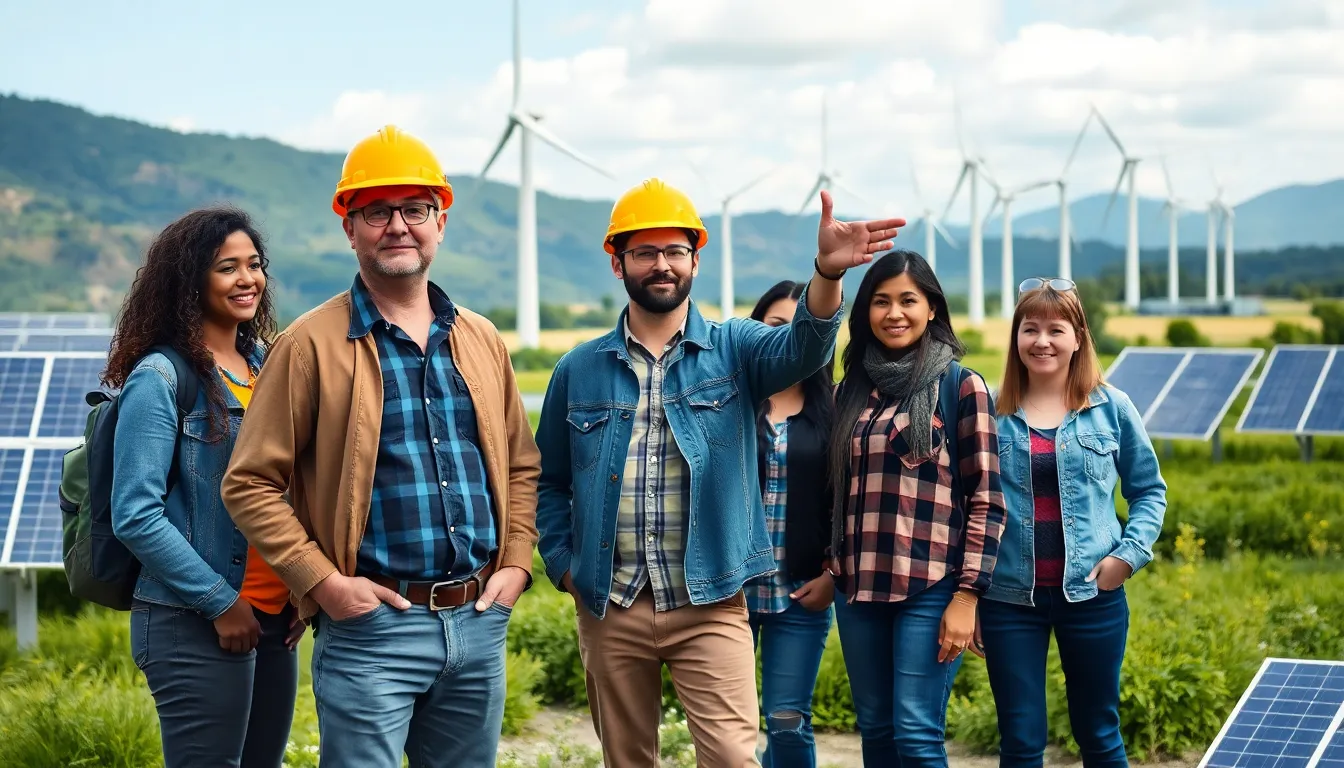As the world grapples with climate change and dwindling fossil fuel resources, green energy solutions are emerging as a beacon of hope. These innovative alternatives not only promise to reduce carbon footprints but also pave the way for a sustainable future. From solar panels harnessing sunlight to wind turbines capturing breezes, the shift towards renewable energy sources is gaining momentum.
Investing in green energy isn’t just an environmental imperative; it’s also an economic opportunity. With advancements in technology, the cost of renewable energy continues to decline, making it more accessible for individuals and businesses alike. As communities embrace these solutions, they not only contribute to a healthier planet but also foster energy independence and job creation. The transition to green energy is not just a trend—it’s a necessary evolution for a thriving future.
Table of Contents
ToggleOverview of Green Energy Solutions
Green energy solutions encompass a range of technologies and practices that harness renewable resources to generate power. These solutions feature solar energy, wind energy, hydroelectric energy, geothermal energy, and biomass energy. Each type offers unique benefits and plays a vital role in reducing reliance on fossil fuels.
Solar Energy
Solar energy utilizes photovoltaic cells to convert sunlight into electricity. This technology not only decreases energy costs but also minimizes greenhouse gas emissions. Installations vary from residential rooftops to large solar farms, making solar energy accessible across different scales.
Wind Energy
Wind energy leverages aerodynamic turbines that transform kinetic wind energy into electricity. Wind farms, located both onshore and offshore, can produce significant power. This process contributes to lower energy prices and fosters local job creation in construction, maintenance, and operation.
Hydroelectric Energy
Hydroelectric energy generates electricity from flowing water, typically using dams. This method provides a stable and reliable power source. Hydropower projects range from large, intricate dams to small-scale run-of-the-river systems, ensuring diverse applications.
Geothermal Energy
Geothermal energy derives from heat stored beneath the Earth’s surface. It harnesses steam or hot water to generate electricity or for direct heating applications. Geothermal plants offer consistent energy production regardless of weather conditions, enhancing grid reliability.
Biomass Energy
Biomass energy utilizes organic materials, such as plant matter and waste, to produce electricity, heat, or fuel. Converting biomass into energy reduces landfill waste and decreases greenhouse gas emissions. This sustainable practice supports circular economy principles by reusing materials.
Green energy solutions significantly contribute to economic growth, energy independence, and environmental sustainability. By investing in these technologies, societies can transition toward a more sustainable energy future.
Types of Green Energy Solutions


Various green energy solutions play a pivotal role in creating a sustainable future. Each type harnesses natural resources, contributing to energy independence and reduced carbon emissions.
Solar Energy
Solar energy derives power from sunlight through photovoltaic cells. This technology converts sunlight directly into electricity. By utilizing solar panels on rooftops or solar farms, users can significantly lower energy costs and emissions. In 2022, the global solar power capacity reached over 1,000 gigawatts, showcasing its growing adoption.
Wind Energy
Wind energy harnesses the kinetic energy of air through turbines. These turbines operate in both onshore and offshore environments, generating electricity without emitting greenhouse gases. In 2021, wind energy accounted for approximately 9% of the total electricity generation in the United States, highlighting its impact on the energy sector.
Hydropower
Hydropower generates electricity from flowing water, typically through dams or run-of-the-river systems. This method provides a consistent and reliable energy source with minimal environmental impact. In 2020, hydropower represented around 37% of the renewable electricity generation in the U.S., making it the largest source of renewable energy.
Benefits of Green Energy Solutions
Green energy solutions present numerous benefits impacting both the environment and the economy. They promote sustainability, enhance energy independence, and drive job creation in various sectors.
Environmental Impact
Green energy solutions significantly reduce greenhouse gas emissions, directly addressing climate change. Solar energy, for instance, produces no emissions during operation, contributing to cleaner air. Wind energy generates electricity without water use or harmful byproducts, preserving natural resources. Hydropower, while dependent on water flow, minimizes emissions compared to fossil fuels, utilizing a renewable resource. Geothermal energy taps into Earth’s core heat, presenting minimal environmental disruption while providing consistent energy. Biomass energy, by converting organic waste into power, supports recycling efforts and reduces landfill waste.
Economic Advantages
Green energy solutions drive economic growth by creating jobs across multiple sectors. The solar industry alone has generated over 250,000 jobs in the U.S. as of 2021, demonstrating vast employment potential. Wind energy supports thousands of manufacturing jobs, involving turbine production and installation. Investments in renewable energy technologies stimulate local economies, attracting new businesses and reducing dependency on imported fossil fuels. Furthermore, decreased energy costs from renewables translate to economic savings for consumers and businesses, promoting stability in energy pricing.
Challenges in Implementing Green Energy Solutions
Implementing green energy solutions faces several challenges that hinder their widespread adoption and effectiveness. These challenges include technological barriers and policy and regulatory issues.
Technological Barriers
Technological barriers impede the efficient deployment of green energy solutions. High initial costs often deter investment in advanced renewable energy technologies. For example, large-scale solar installations may require significant upfront expenditure, making it hard for smaller businesses or individuals to participate. Additionally, energy storage technology, essential for balancing supply and demand, remains underdeveloped. Current battery technologies can limit the effectiveness of intermittent energy sources, such as solar and wind. Furthermore, aging infrastructure presents a challenge; existing power grids may struggle to accommodate the influx of renewable energy without substantial upgrades.
Policy and Regulatory Issues
Policy and regulatory issues create obstacles for the implementation of green energy solutions. Inconsistent policies at federal, state, and local levels complicate investment decisions. Fluctuating incentives can lead to uncertainty, causing potential investors to hesitate. Additionally, bureaucratic hurdles may slow down project approvals and permit processes, delaying the deployment of renewable technologies. Regulations for traditional energy sources can create an uneven playing field, disadvantaging emerging green technologies. The lack of standardized regulations for renewable energy systems can further complicate compliance and deployment.
Future of Green Energy Solutions
The future of green energy solutions looks promising, driven by technological advancements and shifts in policy. Innovations in solar and wind technologies are leading to increased efficiency and lower costs. For instance, solar panel efficiency has improved, with some models reaching over 22% in conversion rates, while offshore wind farms are utilizing larger turbines capable of generating more power.
Integrating energy storage solutions enhances the reliability of renewable energy sources. Battery technology continues to progress, with lithium-ion batteries becoming more affordable and efficient. In 2022, the global lithium-ion battery market projected a compound annual growth rate of 18%, indicating that more energy can be stored for later use, effectively addressing intermittent power generation.
Smart grid technologies are transforming energy distribution. These systems optimize energy flow, allowing for better integration of renewable sources into existing infrastructures. By 2025, smart grid investments in the U.S. are anticipated to reach $70 billion, enhancing grid reliability and resilience.
Emerging green technologies, such as hydrogen gas and advanced geothermal systems, show significant potential for further reducing carbon footprints. Hydrogen production through electrolysis, when powered by renewable sources, could lead to low-emission fuel options. Additionally, enhanced geothermal systems can tap into heat reservoirs, providing a consistent energy supply.
Political commitment plays a vital role in the adoption of green energy solutions. Countries like Germany aim for 80% of electricity from renewable sources by 2030, while the U.S. seeks to achieve a carbon-neutral power sector by 2035. Government incentives, such as tax credits and renewable energy mandates, foster investment and innovation.
Public awareness and acceptance of green energy solutions are increasing. As more individuals recognize the environmental benefits, consumer demand for renewable energy products rises. Reports show that 70% of U.S. adults support the expansion of renewable energy sources, leading to more widespread energy transition initiatives.
With these developments, green energy solutions will significantly shape the energy landscape, providing cleaner alternatives, enhancing energy independence, and driving economic growth.







